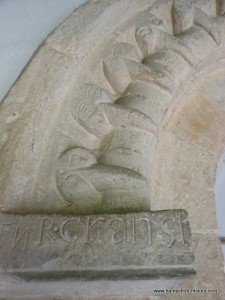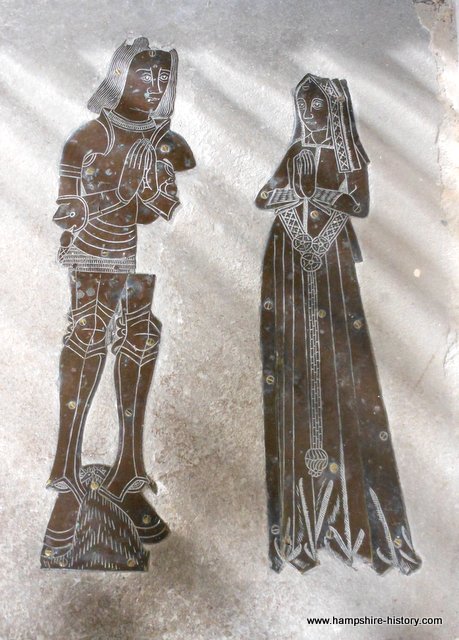St Nicholas Church Bishop’s Sutton, the place of Bishops and surgeons and heroines
St Nicholas Church Bishop’s Sutton is a delightful simple Norman structure. Bishop’s Sutton is one of those Hampshire villages, carved by a busy road, that is easy to pass through without noticing the ancient building at its heart. The history of settlement at Bishop’s Sutton reaches back into the oldest history of England. The headwaters of the River Arle well up in its meadows, clear chalk filtered waters that still serve the community today.
The Saxon settlement evolved around these headwaters. We know from other places, that where waters well from the ground that these become places of ritual. When Birinius began his conversion of the tribes in Wessex, it is quite possible that ‘Sudtunam’ (south settlement), caught their attention as a place of ritual and raised a preaching cross there. As you stand in the church yard north of the church, the land falls away to the water and it is easy to imagine the attraction of such a site.
The church seen today, began life as a simple Norman two bay structure of nave and chancel. Additions were made to the building throughout the Medieval period and the usual Victorian meddling is evident in the addition of the vestry, added in 1882 and obscuring the Norman arch.
Henry de Blois and Bishop’s Sutton
At time of its construction, Henry de Blois was presiding over Winchester and he was a prolific builder of churches and palaces and he probably initiated the building of St Nicholas Church , Bishop’s Sutton, along with a Bishop’s residence, called a palace. As one of the Bishop’s residences , it had a hunting park attached to it. Sutton had become ‘Bishop’s Sutton’. Close by, Alresford was growing as an economic centre for trade. The River Itchen playing its part as it joined forces with the River Arle.
The church and the manor prospered after the death of St Thomas a Beckett and Bishop’s Sutton was on the Pilgrims route between Canterbury and Winchester. It picked up trade as well from its fairs and was on an important route bringing people tothe great St Giles fair held at Winchester. The road had to be kept open and free for traders to pass through. This was an important place in the Middle Ages and subsequent Bishop’s of Winchester used the palace. It is known that Bishop de Roche was at Bishop’s Sutton Christmas 1211.
Returning to the church building, the south doorway is interesting for all sorts of reasons. The Norman pattern around the doorway appears a zigzag but look more closely and you will see it is a bird beak design. There are other bird beak designs in Norman churches, see the window in St Cross. It is a rather intimidating pattern and one wonders at its impact on those early worshipers. Certainly some were totally unimpressed and were happy to carve their presence in the chalk stone. Some of the grafitti as fresh as the day it was created. Several mass dials can be seen around the doorway, probably early in date.
Famous People Connected with St Nicholas Church Bishop’s Sutton
Dr William Cowper, one of the most important surgeon physicians of his time is buried in the church and the memorial on the wall is a fitting epitaph erected by his loving wife.
In the church yard one of lifes forgotten heros or in this case heroine, Ethel McNeile who in 1922, onboard the ship the Egypt, gave up her seat on a lifeboat to a mother and lost her own.
But take a moment to read and think about the Eames Waites family who lost so many of their daughters, not famous but worthy of mention for their suffering none the less.
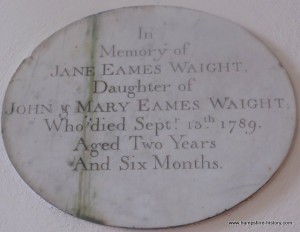
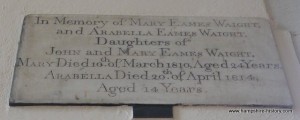
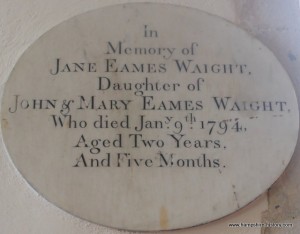
And lastly look out for the lovers
Find one of Hampshire’s most endearing brasses, that of the two lovers..


